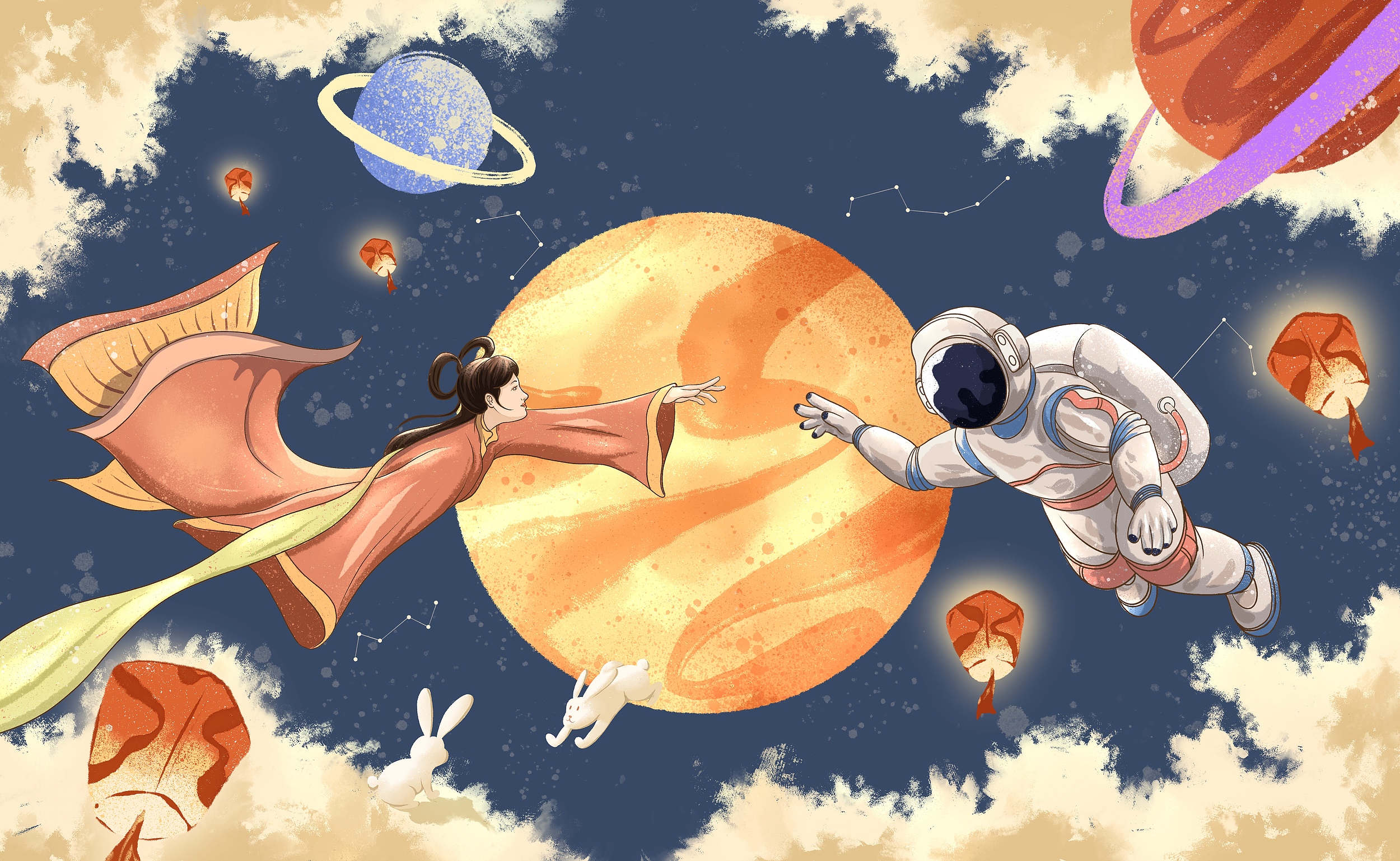Flying to the Moon

(PHOTO: VCG)
In traditional Chinese culture, the moon is emblematic of human emotions and has a prominent role in ancient Chinese literature, songs and mythology. The Mid-Autumn Festival or Moon Festival is one of the most important traditional Chinese festivals.
Since time immemorial, people have been dreaming of reaching the moon. With the advancement of science and technology, China in 2001 launched its lunar exploration program or the Chang'e Program, named after the moon goddess in Chinese mythology. Since then, as it expected, China has completed its three-step plan — orbiting the satellite, landing it and bringing back samples of lunar soil.
China's moon mission has created many landmarks. One is the Chang'e 5 probe bringing about 1,731 grams of soil samples from the moon in 2020. After researching the samples, Chinese scientists discovered a new type of mineral, which contains water in its molecular structure. Evidence shows the existence of water or water ice on the moon's surface, likely in the form of hydroxyl groups. This discovery has opened up new possibilities for the future development and utilization of lunar water resources.
Another landmark is the Chang'e 6 probe. On June 25, it returned to Earth bringing 1,935.3 grams of soil samples from the far side of the moon, a first in human history. Further analysis and research on the samples is expected to unlock more secrets of the satellite and take China's moon mission a step forward.
The Chang'e 6 is part of the fourth phase of China's lunar exploration program, which aims to build an international lunar research station by 2035. The Chang'e 7 mission is scheduled for launch around 2026 to survey the lunar south pole region and the Chang'e 8 probe will be launched around 2028 to carry out experiments on lunar resource utilization.
China is also expanding its international collaborations following the successful operation of payloads from the European Space Agency, France, Italy, and Pakistan on the Chang'e 6 mission. The Chang'e 7 mission will carry six scientific instruments from seven countries and international organizations while the Chang'e 8 will offer 200 kilograms of payload capacity to international applicants and has already received over 30 applications.
China envisions a crewed moon landing by 2030 and so far, the success of the moon missions makes it plausible that the vision will come true, leaving Chinese footprints on the moon.
China has shown itself to be a reliable and responsible partner and is willing to work with the international community for collective knowledge about space and further travel into the vast universe.






